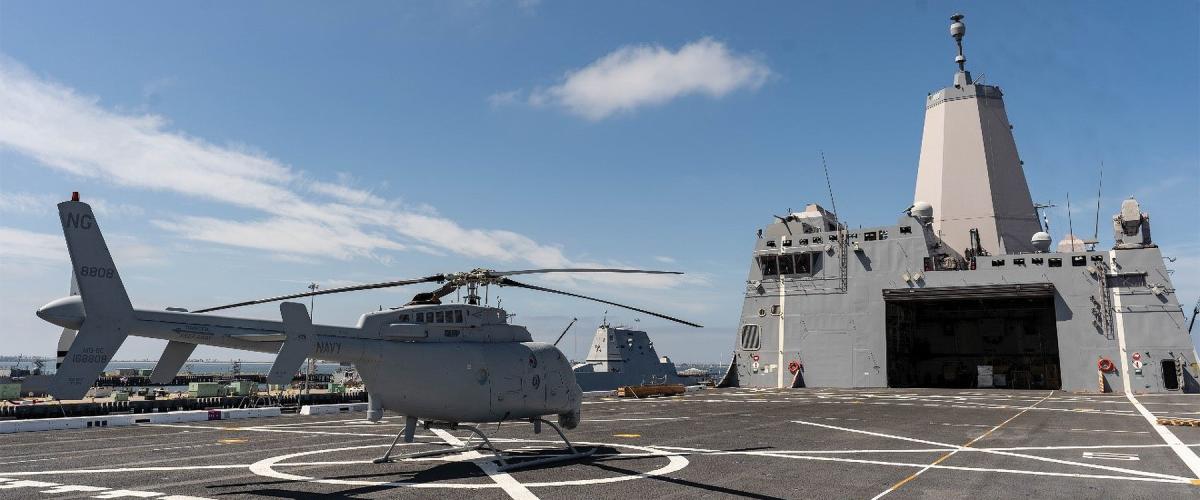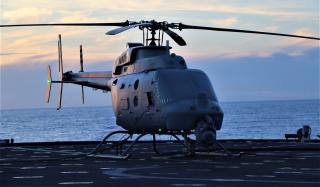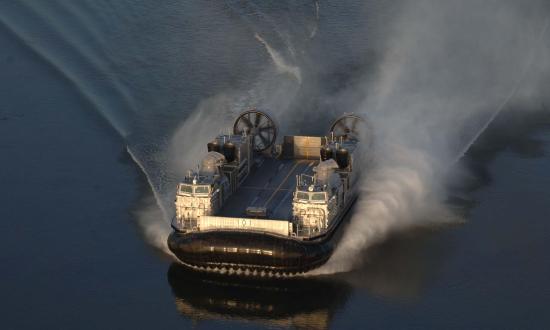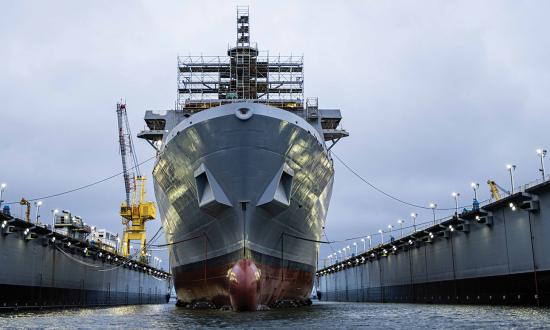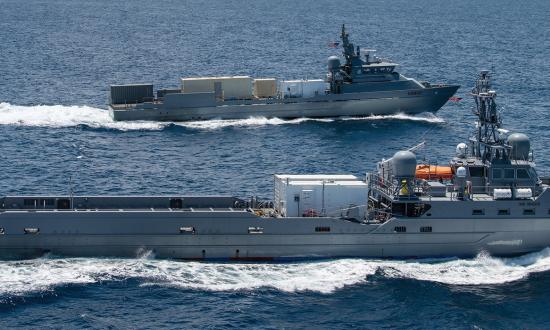Naval Air Systems Command has demonstrated the performance of the rotary-wing MQ-8C Fire Scout unmanned aerial vehicle (UAV) in supporting the Navy’s expeditionary advanced base operations (EABO) tactical concept. The late summer demo showcased the MQ-8C’s operational effectiveness and ability to shift rapidly from control by crew on board the ship to control from shore.
The MQ-8C Fire Scout, built by Northrop Grumman Unmanned Systems, is the current variant of a series developed in the early 2000s, when the Navy looked for a vertical-takeoff UAV to replace the RQ-2 Pioneer. Though the Navy briefly lost interest in the aircraft, the Army developed the RQ-8A Fire Scout into the MQ-8B before moving on to an alternative system.
The MQ-8B entered Navy service in 2006. It operates today on board littoral combat ships in conjunction with manned MH-60S helicopters.
In 2012, Northrop Grumman, Bell Boeing, and NavAir began work on the MQ-8C, which is based on the Bell 407 helicopter. The system went through a successful at-sea flight test on board the Arleigh Burke–class destroyer USS Jason Dunham (DDG-109) in December 2015. It achieved operational capability in June 2019. Northrop Grumman has built and delivered 36 MQ-8C systems.
The MQ-8C Fire Scout was designed for intelligence-gathering, surveillance, reconnaissance, and real-time over-the-horizon targeting. It also can be used in a combat logistics role. The Navy plans to use it on board the Constellation-class frigates and potentially other ships.
For the EABO exercise, sailors from Naval Base Ventura County, Point Mugu, California, launched the MQ-8C in a simulation of a ship-based takeoff. Control then shifted to a portable mission control station (MCS-P) at San Clemente Island. The Navy says that MCS-Ps, which are available from multiple vendors, enable turnover of control of the MQ-8C from ships to austere forward shore operational sites or helipads.
The MQ-8C provides substantial performance gains over the MQ-8B. At 35 feet, the MQ-8C is about 3 feet longer than its predecessor. The system weighs 3,200 pounds empty and 6,000 pounds with maximum fuel and a 300-pound payload. It can carry a heavier payload as well, but there is a fuel/range penalty for doing so. It is powered by a Rolls-Royce engine that turns a four-bladed rotor. It can reach a cruising speed of 115 knots, with a maximum speed of 135 knots. It operates at up to 16,000 feet and can remain on station for 12 hours, more than double the endurance of the MQ-8B.
The MQ-8C’s primary sensor is an all-weather Leonardo Osprey electronically scanned array (AESA) radar. The radar scans a 240-degree field of view for weather and air-to-air surveillance. It also serves as a ground-moving target indicator, providing “eyes” out to hundreds of miles in complex maritime environments. The MQ-8Cs also will be equipped with electro-optical and infrared sensors.
In December 2021, an MQ-8C deployed with Helicopter Sea Combat Squadron 22 on the USS Milwaukee (LCS-5) in the Caribbean for counterdrug operations. Another deployed last spring on the USS Jackson (LCS-6) in the Pacific.
Navy officials say the MQ-8C will be used for manned-unmanned teaming, a concept that integrates the UAV with MH-60S Seahawk helicopters and other manned aircraft for intelligence-gathering and distribution for ships and shore forces, thereby lightening the burden on the manned aircraft. (See “Get Moving with Human-Machine Teaming,” pp. 90–91, August 2022.)
The MQ-8C also could fight—conducting mine countermeasures and antisubmarine warfare operations, for example. The Navy has tested the AN/DVS-1 Coastal Battlefield Reconnaissance and Analysis (COBRA) system, an airborne mine-detection system, with an MQ-8B. Northrop Grumman has tried dropping torpedoes and sonobuoys from a modified Bell 407. And the MQ-8B has shown the capability to launch Hellfire missiles and advanced precision-kill rockets, as well.



